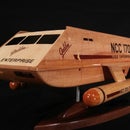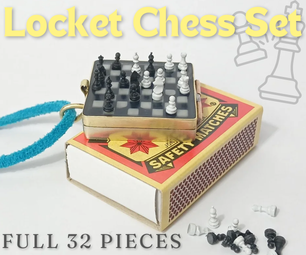Introduction: Star Wars Imperial Guard Helmet
This helmet was first featured in Star Wars - Return of the Jedi and was worn by the six guards that accompanied the Emperor. At the beginning of this project, I could not find schematics to define the geometry of this helmet, so I had to rely on images gathered for the internet and referencing screen shots of the films. Once the geometry was defined in 3D modeling, the master was built and the mold created. The castings are rotocasted urethane epoxy resin with red pigment and clear coated with polyurethane. The visors are 1/8" thick smoked acrylic that are thermoformed.
*Check out my other projects on: Facebook, Twitter, My Website, and My Store.
Step 1: Development
This 3D model was created based off film screen shots, images from the web, and measurements from my first customer. The layers are separated by 2 1/4 inches and represent layers of 1/4" MDF that would be filled with 2" insulation foam and carved to shape.
Imperial Guard Helmet
Step 2: Master
I got the idea of using rigid layers filled with foam from the way they built the model of the USS Enterprise for Star Trek The Next Generation. The layers were printed out, placed on sheets of 1/4" MDF, cut out and assembled. Insulation foam was used to fill the 2" voids between layers and shaved down to shape. Bondo was used to create a hard shell over the foam. The bondo was sanded down and coated with filler primer and then automotive primer. The automotive was sanded with a 600 grit sanding sponge. At this point, the mold was ready to be made.
Step 3: Mold
The mold consists of two parts; a rubber glove mold and a two part support mother mold. The rubber glove mold is made of Smooth-On's Mold Max 30. Thi-Vex and Fast Cat 30 were used at different points to either thicken the rubber or increase the curing rate. The support shell was made of Smooth-On's Plasti-Paste. For detailed instructions of this molding process, check out this video.
Step 4: Casting and Finishing
The final products were rotocasted using Polytek's EasyFlo 120 rotocastable urethane epoxy resin. The plastic was dyed using Polytek's Red PolyColor Dye. The castings were trimmed with a rotary tool and coated with Minwax's fast drying polyurethane gloss clear coat. The visors were thermoformed out of 1/8" smoked acrylic and superglued into place.
In the video, I had already poured the 24 oz portion when I decided to do the video. There's pigment in each portion, so it's red throughout the entire thickness. Otherwise, you'd see blotchy discoloration. The total amount of resin I needed was calculated by multiplying the surface area by the desired thickness of 3/16". So that was 48 oz. Doing the 48 oz in a single pour doesn't work because the weight of the plastic per unit surface area causes it to pull away from the mold as it's curing. This eventually results in the biggest plastic booger you've ever seen. So it has to be divided into multiple smaller portions.
The portions are still being refined each couple of times I pour them. You don't notice in the final product, it just affects the ease of casting. The first pour needs to coat the entire surface to maintain the same color across the surface. Color does vary slightly from pour to pour and is noticeable. If the entire external surface is not accomplished in a single pour, and needs to be completed by a second pour, you will see a split line between two slightly different colors. The subsequent pours provide the reinforcement needed to complete the full desired thickness of the shell. Splitting the reinforcement pours makes it easier to control the liquid. Due to the pot life of the plastic, the more your pour in, the less time you have to focus on covering the areas that are needed. And the geometry of this helmet provides some very tricky surfaces to cover while attempting not to dump plastic onto the floor.
The first split I did, as in the video, was the 24-12-12. The 24 oz seemed to be a bit much, leaving a small clump. So I reduced the initial pour and did a 18-10-10-10 split, which yields far better results than 24-12-12. However, the 18 just barely covers the whole surface. So, I'm moving to a 20-10-10-10 split. 2 extra oz won't effect anything.











